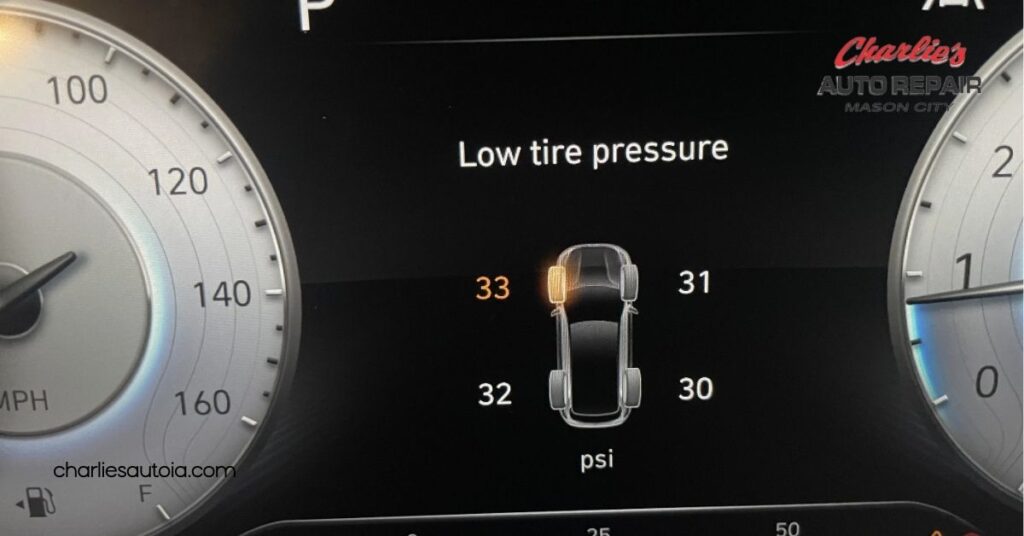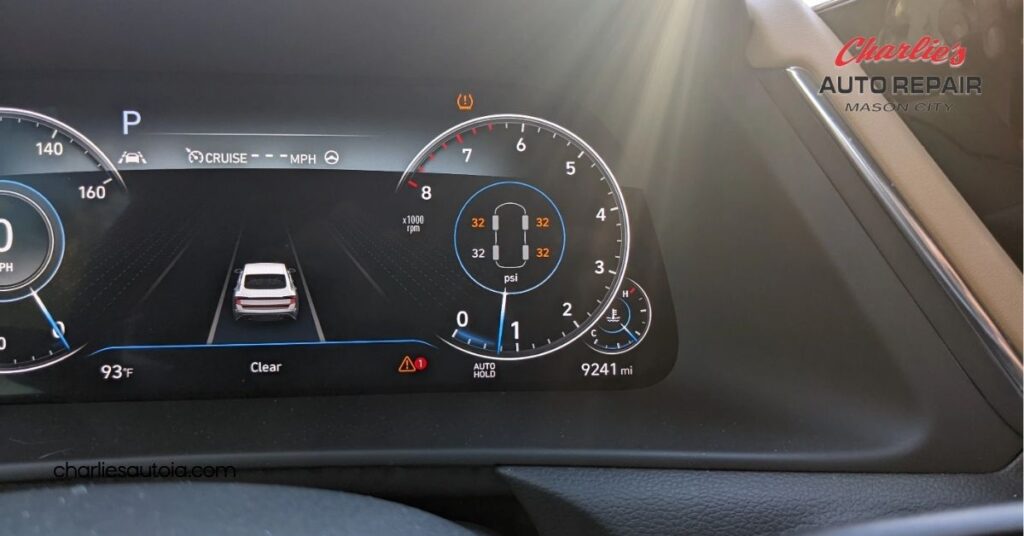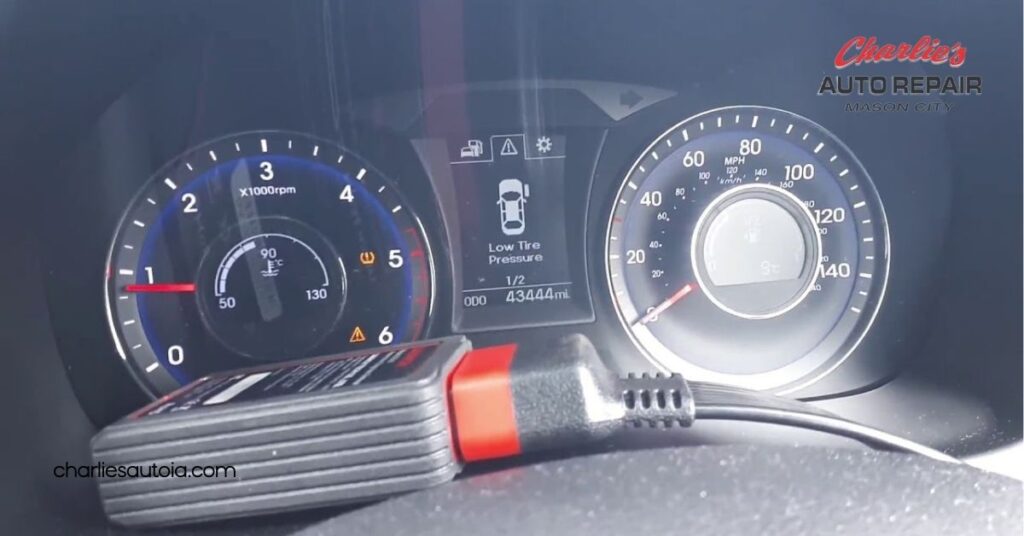If you’re driving a Hyundai Santa Fe, you know how crucial it is to keep an eye on your tire pressure. A properly functioning Tire Pressure Monitoring System (TPMS) not only enhances safety but also improves fuel efficiency. But, you might find yourself in a situation where the TPMS light stays on, signaling that it’s time for a reset.
Overview Of TPMS In Hyundai Santa Fe

Tire Pressure Monitoring System (TPMS) plays a vital role in your Hyundai Santa Fe. This system continually checks tire pressure and ensures optimal performance.
What Is TPMS?
TPMS refers to a safety feature in vehicles that monitors tire pressure. It alerts you when tire pressure falls below recommended levels. The system uses sensors located in each wheel, providing real-time data to enhance driving safety.
Importance Of TPMS
Ensuring proper tire pressure is crucial for various reasons. Correct pressure improves fuel efficiency by reducing rolling resistance. This system also helps prevent tire blowouts, which can lead to accidents. Also, maintaining tire pressure ensures better handling and extends tire lifespan. By promptly addressing TPMS warnings, you contribute to overall vehicle safety and performance.
Steps To Reset TPMS In Hyundai Santa Fe

Resetting the Tire Pressure Monitoring System (TPMS) in your Hyundai Santa Fe involves a few essential steps. Follow these instructions to ensure your vehicle is ready for the road.
Manual Reset Process
- Ensure Proper Tire Pressure: Check that all tires, including the spare, are inflated to the recommended levels. You can find these levels on the tire information placard located on the driver’s side door jamb or in your owner’s manual.
- Locate the TPMS Reset Button: Find the TPMS reset button, typically positioned under the steering wheel or on the left side of the dash. In models from 2019-2022, it is generally found under the steering wheel.
- Turn the Ignition On: Twist the key to the “On” position without starting the engine.
- Press and Hold the TPMS Reset Button: After turning on the ignition, press and hold the TPMS reset button until the TPMS indicator light blinks three times.
- Release the Button: Once the light blinks three times, release the TPMS reset button.
- Drive the Vehicle: To complete the reset, drive your vehicle for about 10-20 minutes. This allows the system to recalibrate and recognizes the corrected tire pressures.
Using The Vehicle’s Dashboard
Using the vehicle’s dashboard can also help resetting the TPMS.
- Navigate to Settings: Access the vehicle’s dashboard and locate the settings menu.
- Select TPMS Options: Within the settings, find the TPMS section. Select the option to reset or calibrate the TPMS.
- Confirm the Action: Upon selecting the reset option, you’ll see a confirmation prompt. Confirm the reset to proceed.
- Monitor the TPMS Indicator: Observe the TPMS indicator light on the dashboard. If it turns off, the reset was successful.
Following these steps helps maintain your Hyundai Santa Fe’s safety and performance by ensuring proper tire pressure monitoring.
Common Issues With TPMS

Your Hyundai Santa Fe’s Tire Pressure Monitoring System (TPMS) may experience common issues that affect accuracy and performance. Understanding these problems ensures you can address them promptly.
Sensor Malfunctions
Sensors can malfunction due to various factors like wear and tear, exposure to extreme temperatures, or battery depletion. When this occurs, you’ll notice the TPMS warning light stays on, even if tire pressure is adequate. Look for signs such as inaccurate readings or delayed sensor response. Checking the sensor batteries periodically can help prevent unexpected failures.
Low Tire Pressure Notifications
The TPMS generates notifications for low tire pressure to maintain safety and efficiency. If you receive these alerts, inspect your tires immediately. Ensure each tire is inflated to the recommended PSI listed on the placard inside the driver’s door. Ignoring these notifications leads to reduced fuel efficiency, compromised handling, and increased risk of tire blowouts. Keeping an eye on the TPMS notifications is vital to ensuring your Hyundai Santa Fe remains safe on the road.
Preventive Measures For TPMS Maintenance

Regular tire maintenance is crucial for keeping your Hyundai Santa Fe safe and efficient. You can ensure optimal performance by implementing the following preventive measures.
Regular Tire Checks
Conduct regular tire checks to monitor pressure levels. Check the tire pressure monthly or before long trips. Look for any visible signs of wear or damage. Maintain the recommended PSI found on the driver’s door placard. Address any pressure discrepancies immediately to avoid TPMS warnings. Make routine inspections a part of your vehicle maintenance schedule for peace of mind.
Temperature Considerations
Consider the effects of temperature changes on tire pressure. Tire pressure typically decreases by about 1 PSI for every 10°F drop in temperature. Cold weather can lead to under-inflation, while heat causes over-inflation. Check your tire pressure more frequently during extreme temperature fluctuations. Adjust tire pressures according to seasonal changes to ensure safety and performance. Keeping your tires properly inflated helps extend their lifespan and improve handling.
Conclusion
Maintaining your Hyundai Santa Fe’s TPMS is crucial for your safety and vehicle performance. By regularly checking tire pressure and promptly addressing any TPMS alerts, you can enhance fuel efficiency and prevent potential tire issues. Remember to follow the reset procedures whenever the TPMS light stays on to ensure accurate monitoring.
Incorporate routine tire inspections into your maintenance schedule to catch any problems early. This proactive approach not only extends the lifespan of your tires but also ensures a safer driving experience. Stay vigilant about your tire pressure and enjoy the smooth ride your Hyundai Santa Fe offers.
Frequently Asked Questions
What is TPMS in a Hyundai Santa Fe?
The Tire Pressure Monitoring System (TPMS) in a Hyundai Santa Fe is a safety feature that continuously checks tire pressure. It uses sensors in each wheel to alert drivers when tire pressure falls below recommended levels, promoting safety and fuel efficiency.
Why is maintaining proper tire pressure important?
Proper tire pressure is crucial for several reasons. It improves fuel efficiency, enhances vehicle handling, prevents tire blowouts, and extends the lifespan of the tires, ensuring a safer driving experience.
What should I do if the TPMS light is on?
If the TPMS light is on, it usually indicates low tire pressure or a need for a reset. Promptly check the tire pressures and reset the system according to the vehicle’s manual to maintain safety and performance.
How can I reset the TPMS in a Hyundai Santa Fe?
To reset the TPMS, you can follow a manual reset process or use the vehicle’s dashboard settings. Detailed steps can typically be found in the owner’s manual, ensuring proper monitoring of tire pressure.
What common issues can occur with the TPMS?
Common TPMS issues include sensor malfunctions due to wear and tear, extreme temperatures, or battery depletion. These can lead to inaccurate readings or a persistent warning light, which should be addressed promptly for safety.
How often should I check my tire pressure?
It is recommended to check your tire pressure at least once a month or before long trips. Regular checks help ensure that tire pressure is at the recommended PSI and can identify visible signs of wear.
How do temperature changes affect tire pressure?
Temperature changes significantly impact tire pressure. Typically, tire pressure decreases in colder temperatures and increases in warmer conditions, so it is important to adjust your pressures seasonally for safety and performance.

